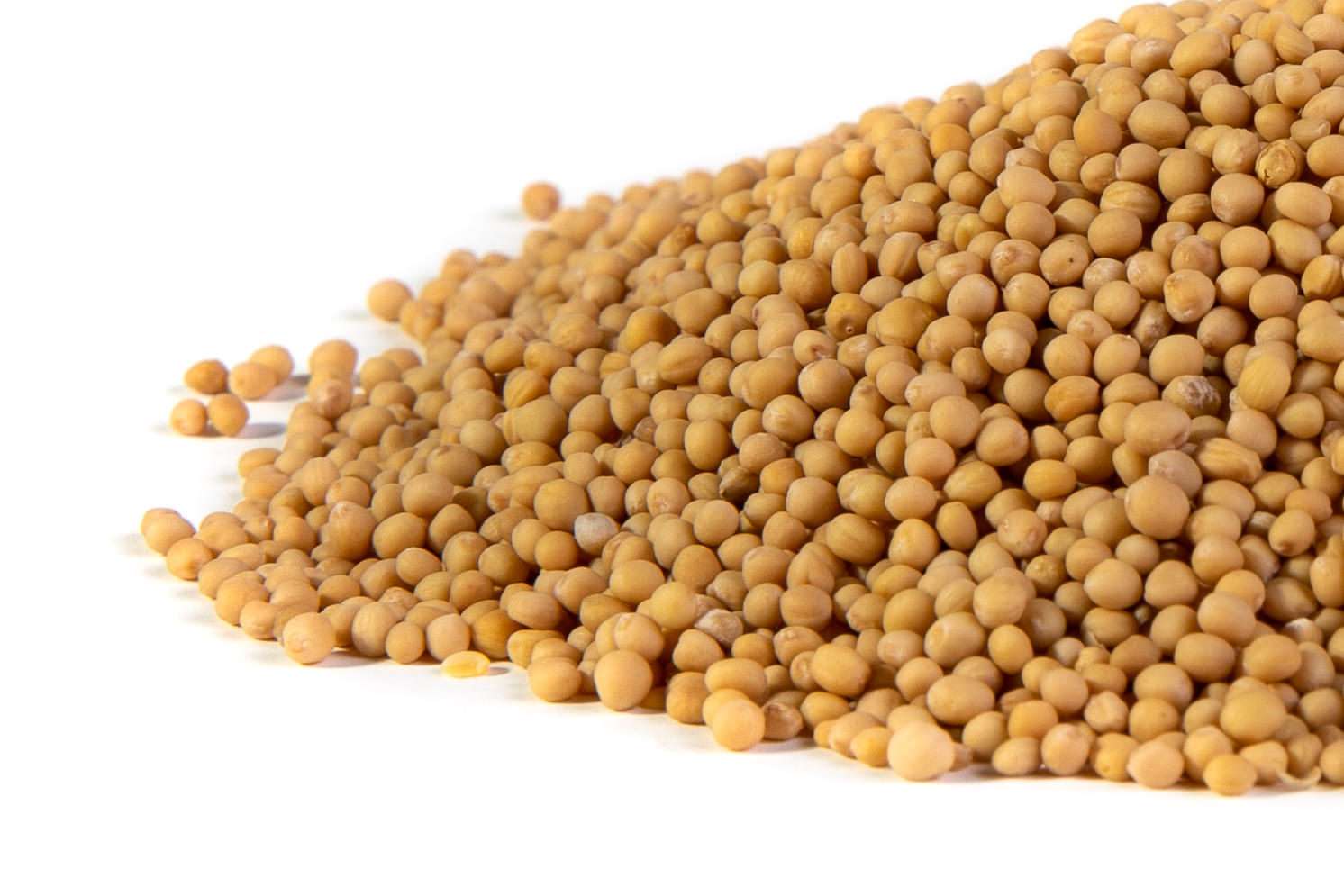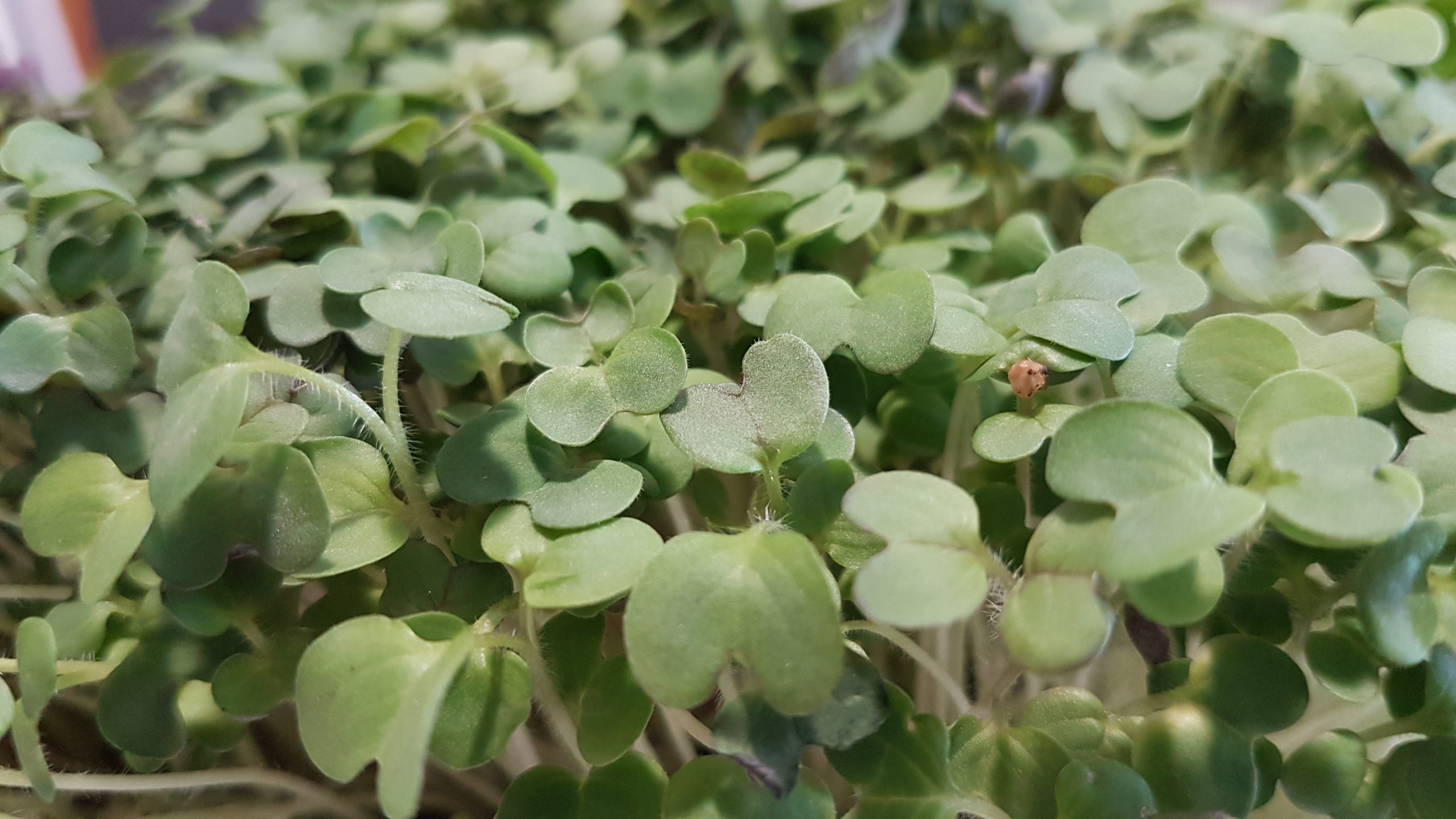Our current lot of yellow mustard is best grown as a Microgreen
Hot and Spicy!
Soak Time: Do not soak
Storage: Store seeds in cool, dry conditions.
Grow Microgreens!
Soilless Method
No Soak, mist only. Day 1
Fit a heavy duty unbleached paper towel, coffee filter, or Baby Blanket to your sprouter of choice- on a plate, porous surface like a terracotta pot bottom or tray with grid holes in the bottom of it.
Mist paper towel so the seed will stick to the surface when you spread them.
Sprinkle the seed in one thin layer so after misted and taken up the water, the seeds will be one seed beside the other. Use spoon or other tool to separate clumps.
Mist seed on the towel 2x in the first hour or two to be sure it has started to hydrate. Pour off pooled water.
Place sprouter in a vented plastic bag and return it after every rinse.
Rinse/mist twice daily.
Once the seed is stuck to the paper mist more aggressively. Use enough water to prevent roots from browning or water from a slow-moving tap.
Drain off any excess water with each rinse. Tap the sprouter to release water from the holes. Drain off excess water on your plate.
Grow & Harvest
By day 3 the sprouts have raised above the towel and start to free themselves from the towel. At this time, you can decide to take the towel out or let the roots grow into the towel in a day or two. If you choose to scrape the sprouts off the towel carefully water under the tap gently until you harvest on day 5, 6 or 7. The gelatinous nature of the hulls, make them susceptible to mold so eat the sprouts soon after harvest.
If you chose to leave the sprouts to grow into the towel, water until the new shoots are tall enough to cut with scissors above the roots- probably day 7 to 9.
Cress is the only gelatinous seed you will be able to put in a bowl of water and float some of the hulls off of if you want to. There is lots of fiber in the hulls and there are advantages to eating the whole sprout.
Enjoy!
Grow Microgreens!
Soil Method (small seed)
You will need:
• 10” x 20” gardening trays (1-inch-tall preferred), 1 with
holes + 1 without. Smaller microgreen trays also work well.
• Good quality organic starting soil mix
• Parchment paper or unbleached paper towel (optional).
• Dome lids (clear or black) or plastic sheet
• Organic seed
• Mister bottle, cup measures, garden spray nozzle (optional)
• Scissors or sharp knife
1. Don’t soak small or medium size seed. Small seed such as broccoli and arugula are easier to sprinkle on top of the soil if they are not soaked.
2. Prepare Soil
Add water to top of the bag (or each tray) 12 hours ahead of use until almost fully hydrated. Rehydrate the bag as necessary. If you were to put the soil in your hand and squeeze it, you should not be able to get much more than a drop of water out of it for the perfect moisture content. If you want to mist the seed after putting it on the soil, reduce the water hydration of the bagged soil a bit.
TIP: To check for overwatering, tip the tray to one end. Water should not pool enough to drip out of the tray.
3. Fill Trays with Soil
Use a tray with holes. Fill with 3/4-1.5” of soil. The closer to the top of the tray the better aid to air circulation. Use a block or your hand to smooth and flatten the soil without compacting it. The back of a tablespoon or spatula smooths out the valleys. You can wait to put the tray without holes under until after unstacking/uncovering or add it to the bottom now.
TIP: Place a layer or two of paper towel on the bottom of the tray before adding soil for easier cleanup.
4. Sow the Seed
Sprinkle the seed evenly over the soil in the tray (pizza cheese shaker, spoon). The seeding density depends on the stage at which you’re planning to harvest. For small seeds for 1-week microgreens, start with approximately 15 -28 grams (1.5 – 2 Tbsp). Sow slightly less seed for 2-3 week microgreens.
Seeds do not need misting if the soil has enough moisture. Mist if you need more moisture. Use a spray bottle or a garden spray nozzle set to light mist. The soil should be moist throughout, but not soaking wet.
5. Cover the Seed
Doing away with soil as a seed cover decreases the work and time it takes to grow the greens. If stacking the trays on top of each other, use a cover directly on the seed like parchment paper, a plastic sheet or wet unbleached paper towel layer. When not stacking trays, the seed will need protection from drying out by using a dome/lid. Use a clear dome or an inverted 10 x 20” tray without holes. For smaller trays, use several layers of unbleached paper towels folded onto itself with or without a plastic sheet covering the top.
TIP: Most microgreens will grow taller when you keep the light out at the beginning, but this may make the stem weaker. Most seeds germinate in the light no problem.
6. Stack Trays or Cover with Lids
Stacking helps to quickly force the roots into the soil, provides darkness, promotes even germination/growth. Stack 2-5 filled trays on top of each other with an empty tray on the top of the stack with a weight in it. Check at least once a day to see if the trays need water. Cabbage family seed sprouts quickly, so stack for 2-3 days. Others stack 3-5 days.
If choosing not to stack, simply cover the trays with clear or black-out plastic, a lid or dome. Check at least once a day to see if the trays need water. Cover for the same number of days as above.
7. Expose to Indirect Sunlight, Florescent/LED or Grow Lights.
After 2-5 days, the microgreens should be ready for light. If the microgreens begin to get quite tall and leggy, this is an indication that they may need a bit more light.
8. Water the Growing Microgreens
Check the seed once or twice daily and water as needed. The soil should be moist, not wet. Once trays are unstacked, add water from below into the no holes tray as necessary.
9. Harvest!
Microgreens are harvested at 1-3 weeks with scissors or a sharp knife. Make sure microgreens are not damp before storing. If needed, you may use a small fan or salad spinner to dry the microgreens before storing in a sealed container in the fridge.
Instead of harvesting all at once, you can start to harvest microgreens as soon as the first two leaves are spread out. Take only what you need for your meal and allow the rest to keep growing or put the tray in the fridge loosely covered and a plastic bag or dome to harvest another day. Water as necessary.




Mustard maker –
Mumm’s also has great service from friendly helpful staff.